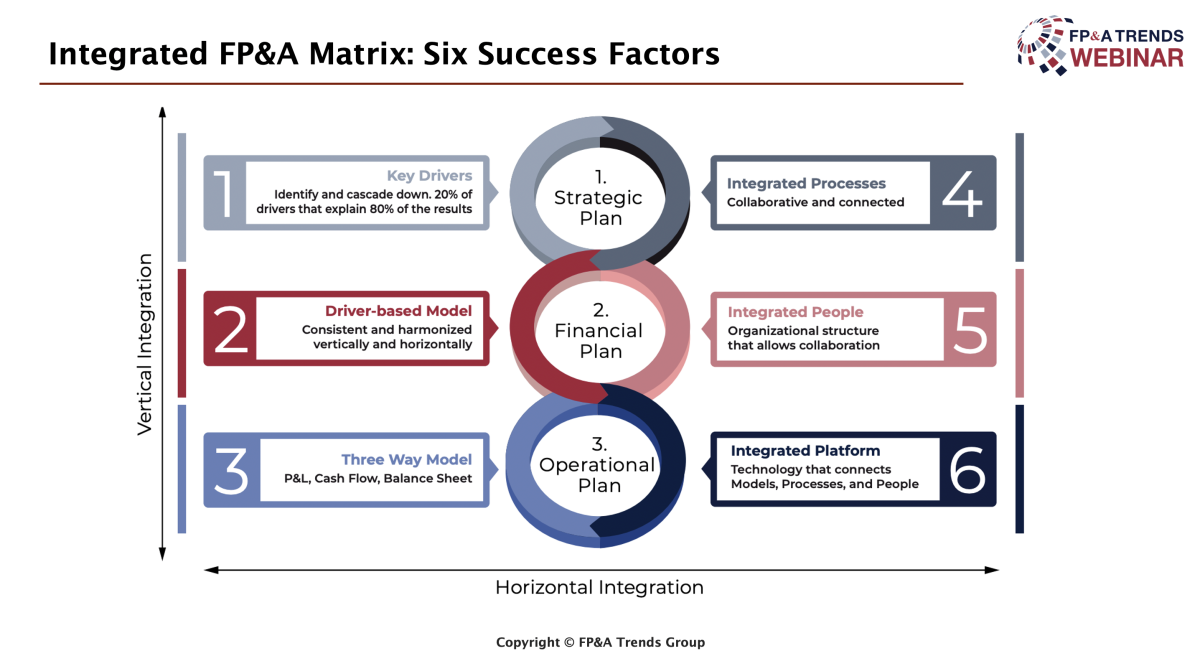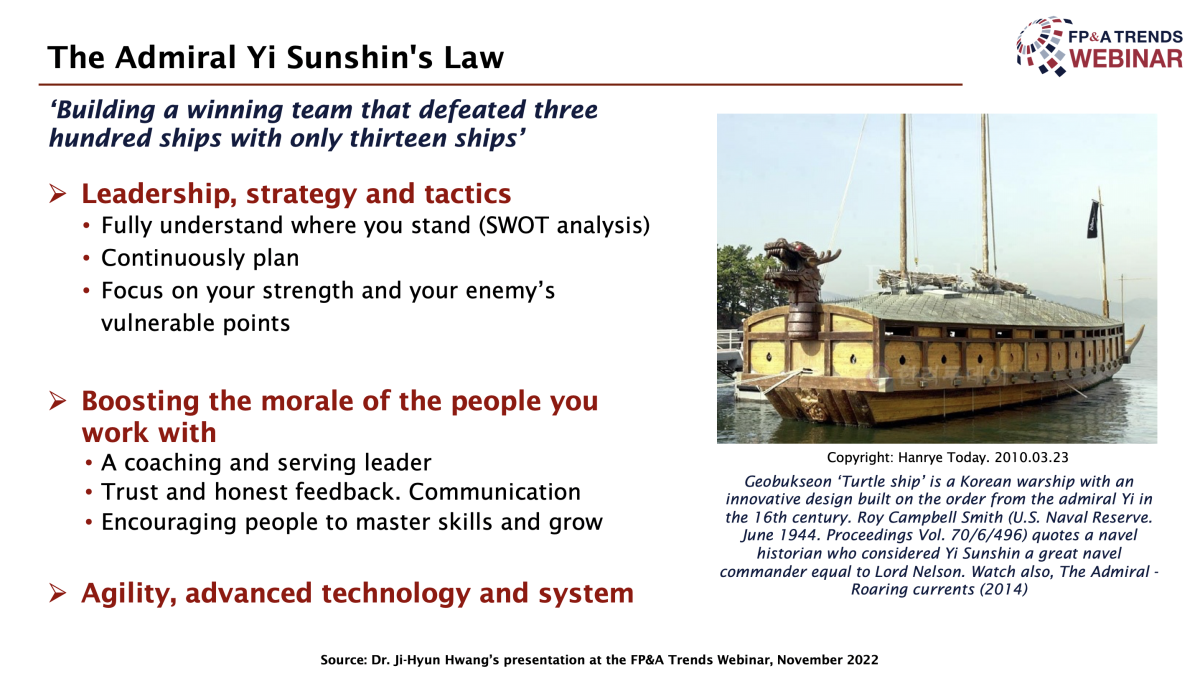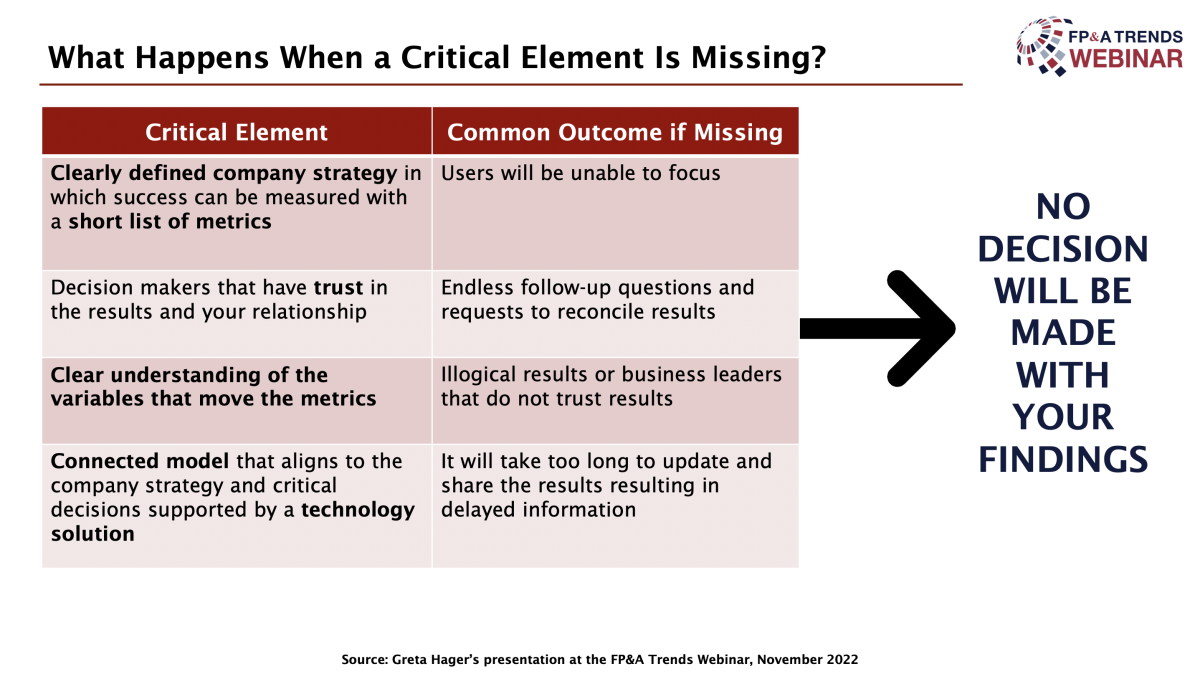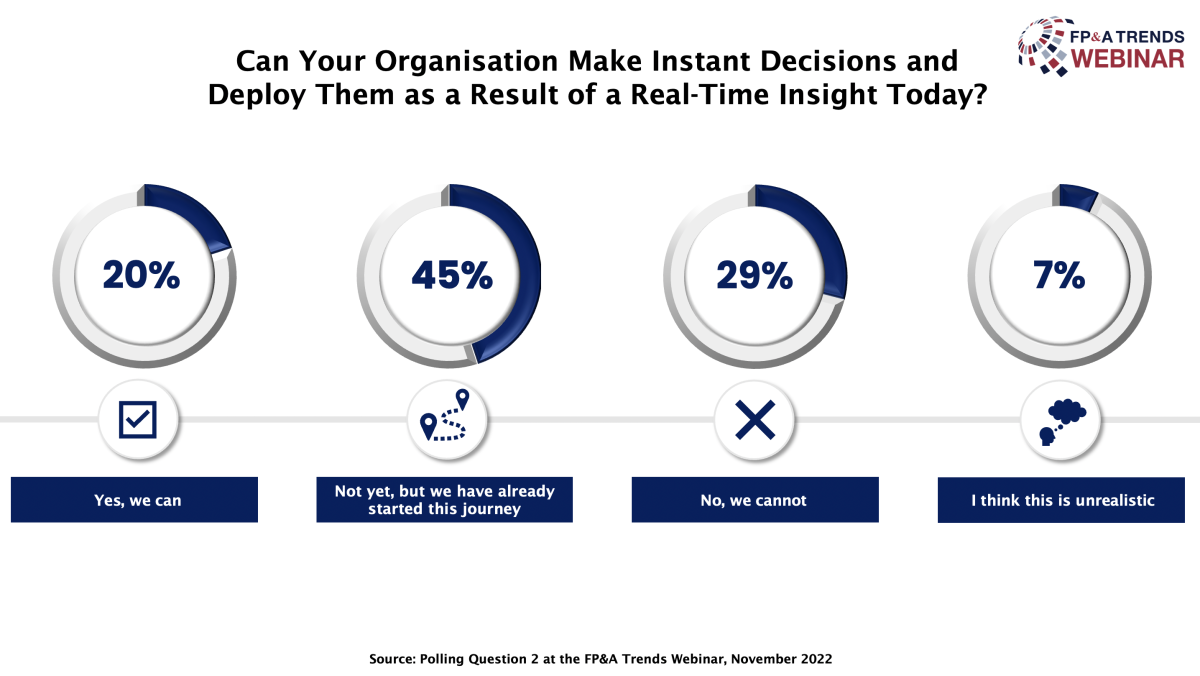Sustainability is a natural part of business and client offerings. Therefore, taking a systematic approach to...
Introduction
Traditional planning may work only in stable and predictable environments where changes occur less frequently. However, today’s business environment is marked by frequent turbulence, particularly in fast-paced industries like tech and retail, where market conditions can change considerably. Since companies have to react, update and adjust their strategies continuously, driven by real-time data, continuous planning becomes necessary. What does this involve?
Together with the panel of senior finance and thought leaders from SEB, MassMutual and Pigment, we explored the essentials of continuous planning during the FP&A Trends webinar hosted on November 16, 2022. Let’s dive in to find out.
Definition and Benefits of Real-Time and Continuous Planning
Real-time and continuous planning is a planning approach that involves continuous decision-making. It helps companies to frequently adjust their strategies and operational plans based on the latest data and analytics. This transformative approach increases their responsiveness to changes and uncertainties within their industry.
Unlike traditional planning, decisions in this method do not rely on outdated assumptions by the time of the next planning cycle. Real-time and continuous planning enables companies to make necessary adjustments when data becomes available through analytics and predictive models. A continuous plan is dynamic and open-ended in nature, making it very adaptable at any time. A key advantage is that it provides regular reviews and aligns all departments across the organisation towards the same goals, leading to more integrated and agile planning. For example, this approach helped Maersk navigate the Suez Canal crisis by leveraging predictive analytics and real-time data to reroute vessels via the Cape of Good Hope, minimising delays and demonstrating the importance of dynamic planning in mitigating global supply chain disruptions. Similarly, in the retail industry, ZARA constantly monitors sales trends to promptly adjust its inventory and marketing strategies.
Real-time and continuous planning improves collaboration between teams. Thus, it can help us reduce silos and ensure regular communication and knowledge sharing, leading to integrated and harmonised planning processes and better resource allocation. For example, cloud-based planning platforms enable cross-functional teams to access the same real-time information and work together on it.
Figure 1 illustrates six key areas that, through their interaction, enable organisations to create a continuous planning ecosystem.

Figure 1
Turning Uncertainties into Opportunities with Continuous Planning
In her insightful webinar presentation, Dr Ji-Hyun Hwang, Global Business Controller at SEB, shared her insights on the transformative potential of continuous planning for businesses. Due to its rigid annual cycles, traditional planning struggles to keep pace with today’s rapid changes. Continuous planning, on the other hand, offers a dynamic alternative, seamlessly integrating real-time adjustments with sustainability goals. Dr Hwang underscored that embedding ESG metrics and fostering collaboration across departments can build resilience and deliver long-term value to stakeholders.

Figure 2
Moreover, she also pointed out the importance of people’s and technological aspects, which are stellar for effective continuous planning. Dr Hwang compared successful FP&A leadership to the strategic brilliance of Admiral Yi Sun-shin, emphasising the importance of agility, clear communication and empowerment. Concluding her presentation, she stated that while technology enables real-time insights and decision-making, FP&A teams are poised to act as sustainability ambassadors and collaboration facilitators across the whole organisation. Implementing this approach not only sharpens organisational focus but also helps teams to turn uncertainty into opportunity and drive sustainable growth for their organisations.
How Many of Us Have Achieved Integrated FP&A?
The webinar attendees were asked to share their thoughts on the achieved level of integration. Only 16% of the respondents claimed that they have fully integrated plans. Most respondents said their processes are integrated between finance and strategy (23%) and between finance and operations (40%). The rest 20% do not have integrated processes, which may hinder their organisational agility and responsiveness to change.

Figure 3
Three Essential Pillars for Successful Continuous Planning
In her presentation, Greta Hager, Head of FP&A at MassMutual, outlined three critical elements for successful continuous planning and stated what happens if any of them is missing. At its core, continuous planning demands models that can be easily updated, with insights shared rapidly across the organisation. This dynamic process hinges on the following components: a thorough understanding of key variables, a connected model aligned to company strategy and technology solutions that enable real-time updates and collaboration.

Figure 4
The first pillar, understanding the variables that drive metrics, ensures the reliability and credibility of planning outputs. These metrics must align closely with organisational priorities and decision-making. The second pillar, a connected model, ties these variables to strategic goals while keeping everything simple. Lastly, leveraging fit-for-purpose technology facilitates real-time variable updates and dashboard reporting. Either through sophisticated software or even tools like Excel, the primary focus remains on enabling seamless communication and decision-making.
Can We Make Decisions Quickly?
Our second poll revealed how many organisations can make instant decisions. Only 20% of the respondents can make real-time decisions, while 7% think that is unrealistic. The positive news is that 45% of the audience has already started working in this direction. However, for 29% of those who voted, real-time decision-making remains impossible.

Figure 5
Challenges of Implementing Real-Time and Continuous Planning
Implementation Hurdles
While real-time planning opens up new capabilities, it also comes with several challenges. In the concluding presentation, Chloe Giraut-Pierron, Head of Finance at Pigment, stressed that continuous planning involves a mindset shift, rethinking existing processes and leveraging new technology. Depending on their size and specific industry needs, companies may choose between a full transition to the new model or a more cost-effective hybrid approach. Additionally, it requires effective Change Management.
Implementing continuous planning requires reviewing processes and establishing a structure to support it. Companies must increase their review cycles, accelerate analyses and make necessary adjustments promptly. Leadership plays a crucial role as a facilitator, encouraging collaboration among departments and a culture of adaptability.
Technology Is the Real-Time and Continuous Planning Key Enabler
Continuous planning requires an advanced technological environment to gather, process and analyse real-time data.
This approach is driven by data, and decisions are based on the latest insights rather than obsolete budgets or forecasts. Real-time access to new information improves decision accuracy and also reduces uncertainty. However, it is worth noting that the effectiveness of the models also depends on data quality and may not entirely replace strategic human oversight in all cases. As technology advances, technology platforms can allow us to run multiple scenarios simultaneously and empower companies to anticipate and prepare for future trends more effectively.
Conclusion and Future Outlook
To summarise what was covered above, the journey from traditional to real-time and continuous planning goes beyond a simple technological upgrade. It requires a significant transformation. If companies know how to effectively leverage this modern approach and shift their paradigm to operate with agility and make strategic decisions based on real-time insight, they can improve their forecasting accuracy and responsiveness, positioning themselves as leaders in a fast-evolving economic landscape.
In the era of AI, it will be easier and more affordable for FP&A teams to transition to continuous planning. AI’s ability to correlate a higher volume of data for better market predictions may have an interesting impact on our industry.
This webinar was proudly sponsored by Pigment.
To watch this webinar, please follow the link.
Subscribe to
FP&A Trends Digest

We will regularly update you on the latest trends and developments in FP&A. Take the opportunity to have articles written by finance thought leaders delivered directly to your inbox; watch compelling webinars; connect with like-minded professionals; and become a part of our global community.






